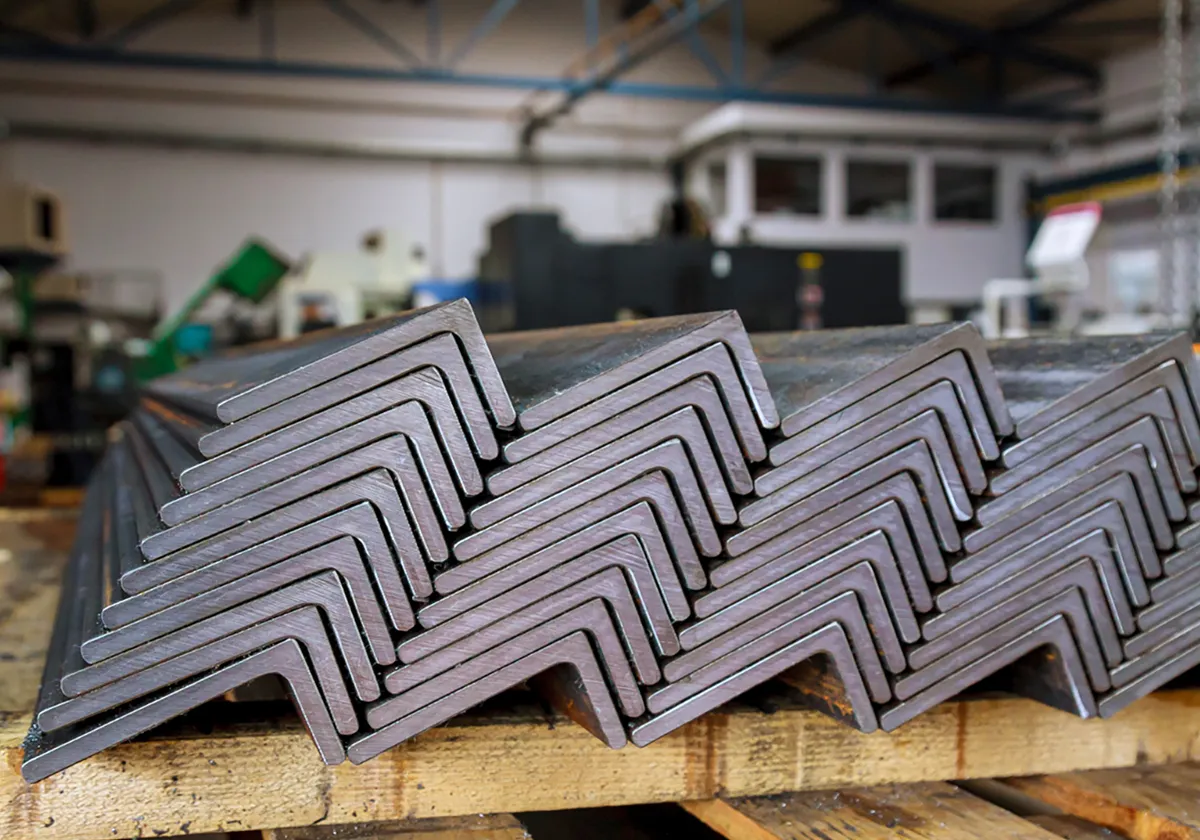Angle steel, commonly referred to as angle iron, is a long piece of steel with two sides forming a perpendicular angle. It is primarily categorized into two types: equal angle steel and unequal angle steel. Depending on structural requirements, angle steel can be used as load-bearing components or as connectors between different parts of a structure.
Angle steel finds extensive application in a variety of construction and engineering projects, such as house beams, bridges, transmission towers, lifting equipment, ships, industrial furnaces, reaction towers, container racks, cable trench supports, power pipelines, busbar bracket installations, and warehouse shelves. To precisely determine the weight of angle steel, it’s essential to understand the weight calculation formula, which will be explained in detail below.

1. Key Parameters of Angle Steel
Accurately calculating the weight of angle steel requires knowledge of several parameters: side length, thickness, and total length. The side length and thickness determine the cross-sectional area, while the length specifies the volume. These parameters are crucial for obtaining an accurate weight calculation.
2. Weight Calculation Formula for Angle Steel
The formula for calculating the weight of angle steel is as follows:
weight (kg) = (side width (mm) + side width (mm) - side thickness (mm))×side thickness (mm)×length (m)×0.00785
Here, 0.00785 is the density of steel in kg/cm³. This formula is based on the fundamental principle that weight is equal to density times volume. By plugging the relevant parameters into the formula, the weight of the angle steel can be determined.
It’s worth noting that discrepancies may exist between the theoretical weight derived from the formula and actual measurements, largely due to inconsistencies in corner arcs or slight variations in the thickness of the steel.
3. Important Considerations
When using the angle steel weight calculation formula, keep the following points in mind:
Ensure accurate measurement of side length, thickness, and total length.
Adjust for the specific steel grade's density if necessary, as different steel types may have slight density variations.
Make sure all length measurements are converted into meters for consistency in the formula.
Understanding and applying this weight calculation formula can aid in precise material estimation, facilitating procurement and cost accounting in construction, machinery manufacturing, and other industries. Additionally, it’s crucial to consider the specifications and materials of the angle steel for more accurate results in practical applications.






































